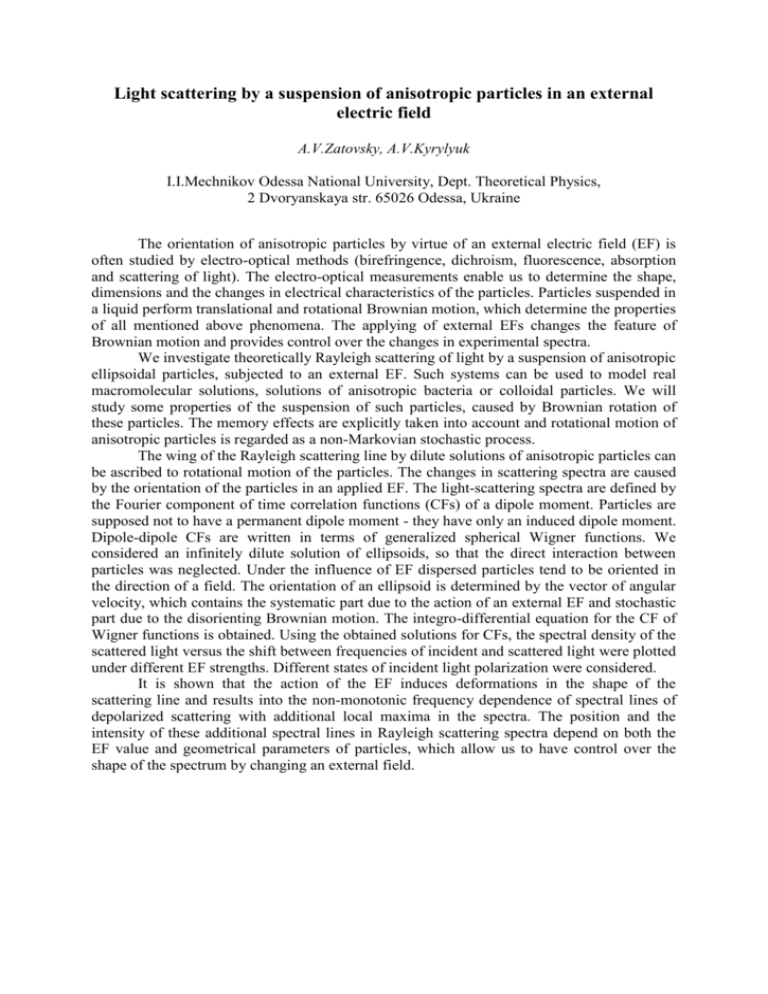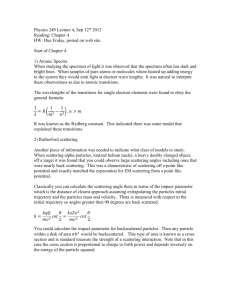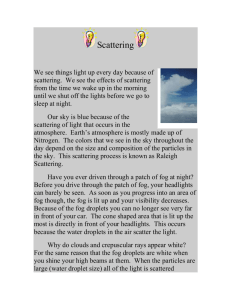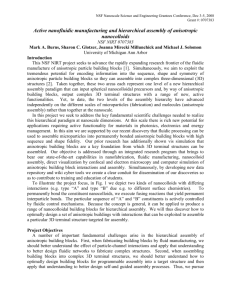Light scattering by a suspension of anisotropic particles in
advertisement

Light scattering by a suspension of anisotropic particles in an external electric field A.V.Zatovsky, A.V.Kyrylyuk I.I.Mechnikov Odessa National University, Dept. Theoretical Physics, 2 Dvoryanskaya str. 65026 Odessa, Ukraine The orientation of anisotropic particles by virtue of an external electric field (EF) is often studied by electro-optical methods (birefringence, dichroism, fluorescence, absorption and scattering of light). The electro-optical measurements enable us to determine the shape, dimensions and the changes in electrical characteristics of the particles. Particles suspended in a liquid perform translational and rotational Brownian motion, which determine the properties of all mentioned above phenomena. The applying of external EFs changes the feature of Brownian motion and provides control over the changes in experimental spectra. We investigate theoretically Rayleigh scattering of light by a suspension of anisotropic ellipsoidal particles, subjected to an external EF. Such systems can be used to model real macromolecular solutions, solutions of anisotropic bacteria or colloidal particles. We will study some properties of the suspension of such particles, caused by Brownian rotation of these particles. The memory effects are explicitly taken into account and rotational motion of anisotropic particles is regarded as a non-Markovian stochastic process. The wing of the Rayleigh scattering line by dilute solutions of anisotropic particles can be ascribed to rotational motion of the particles. The changes in scattering spectra are caused by the orientation of the particles in an applied EF. The light-scattering spectra are defined by the Fourier component of time correlation functions (CFs) of a dipole moment. Particles are supposed not to have a permanent dipole moment - they have only an induced dipole moment. Dipole-dipole CFs are written in terms of generalized spherical Wigner functions. We considered an infinitely dilute solution of ellipsoids, so that the direct interaction between particles was neglected. Under the influence of EF dispersed particles tend to be oriented in the direction of a field. The orientation of an ellipsoid is determined by the vector of angular velocity, which contains the systematic part due to the action of an external EF and stochastic part due to the disorienting Brownian motion. The integro-differential equation for the CF of Wigner functions is obtained. Using the obtained solutions for CFs, the spectral density of the scattered light versus the shift between frequencies of incident and scattered light were plotted under different EF strengths. Different states of incident light polarization were considered. It is shown that the action of the EF induces deformations in the shape of the scattering line and results into the non-monotonic frequency dependence of spectral lines of depolarized scattering with additional local maxima in the spectra. The position and the intensity of these additional spectral lines in Rayleigh scattering spectra depend on both the EF value and geometrical parameters of particles, which allow us to have control over the shape of the spectrum by changing an external field.











